On the Road is a weekday feature spotlighting reader photo submissions.
From the exotic to the familiar, whether you’re traveling or in your own backyard, we would love to see the world through your eyes.
Well it’s definitely winter because we are having a run of zero degree weather here, but the bright spot is that at least we get to spend Winter in Flyover Country with Albatrossity! Then Christopher Mathews takes us on a one-day trip to Iceland, where we learn how Iceland got its name. Oh, and you better get out your hiking boots because on Wednesday we’re starting a 3-day hiking trip with way2blue.
Albatrossity
The week after Christmas must mean that it is time for more bird pictures here. I’ve been spending a lot of time documenting the variety of Red-tailed Hawks that hang out in Flyover Country every winter, and today’s post will feature some of those, as well as some other migrants who were just passing through. In the weeks to come there will probably be more hawks, and lots of other winter resident birds who brighten up this part of the world during the dark and cold time of year.
I’d also like to remind you, even if you already have enough calendars, that my Flyover Country Birds 2022 calendar, and a new addition, a Bird Butts 2022 calendar, are available for gifting, receiving, and year-long season-marking. So if you enjoy birds, and have room on your walls for a calendar, check them out!
Many birders know that Red-tailed Hawks (Buteo jamaicensis), a species that is distributed across the North American continent, come in an immense variety of plumages, even though the standard-issue summertime redtail in their part of the country might not be that variable. Here in Flyover Country in the winter, on an average day we can easily find representatives of 4 of the 5 most widespread subspecies, and on a good day we can see all 5! This week I will highlight the most variable of those subspecies, Harlan’s Red-tailed Hawk (B. j. harlani).
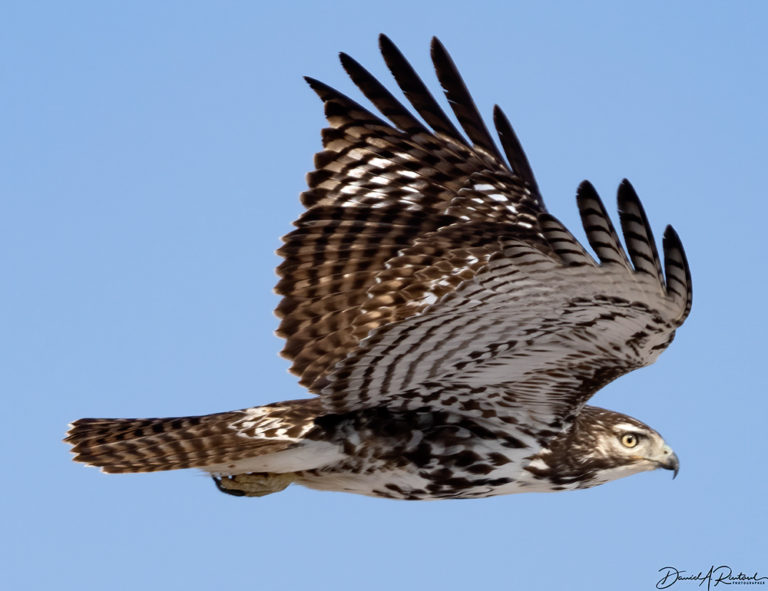
Harlan’s is one of two subspecies that comes in three different morphs (not phases): light; dark, and intermediate. Many birders are familiar with the dark-morph birds, and our beloved Harley (back on his territory again for the ninth winter this year) is one of those. But the light-morph birds are just as striking. Here is a young one, from February of 2021. This version is characterized by stark dark tones and blinding white.
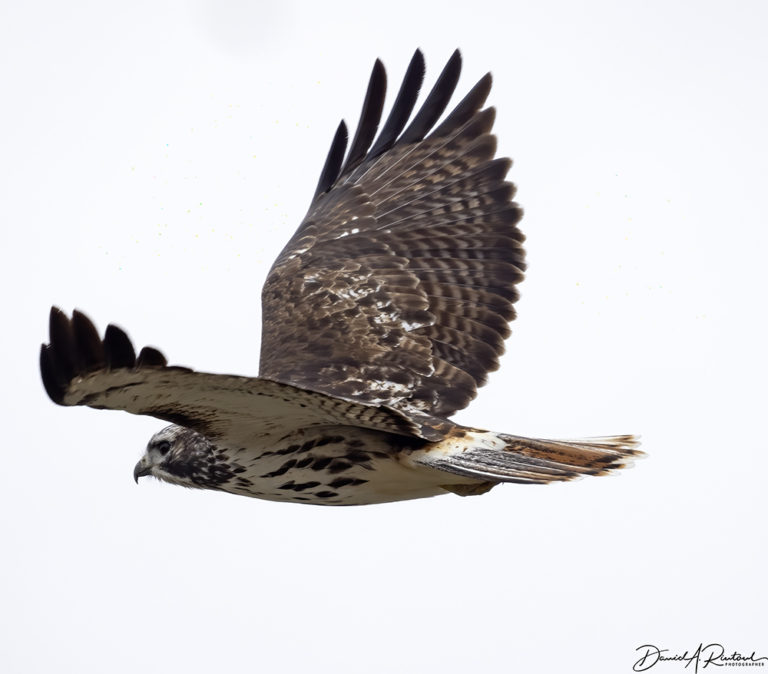
When that one grows up it may resemble this adult light-morph Harlan’s Hawk, although it is extremely likely that the patterns and colors on the upperside of the tail will be unique, since no Harlan’s Hawk seems to have a tail that looks like any other.
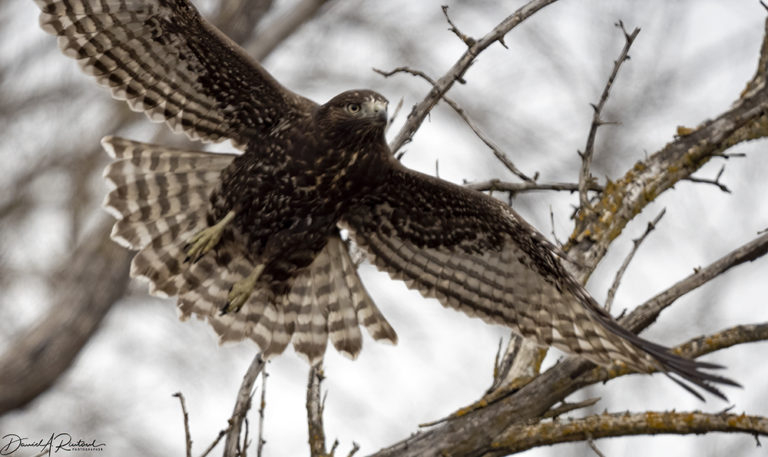
Dark-morph birds are the most common here in the winter, and this year has proven to be no exception. Here’s a young one, with the icy eye that makes this version so menacing.
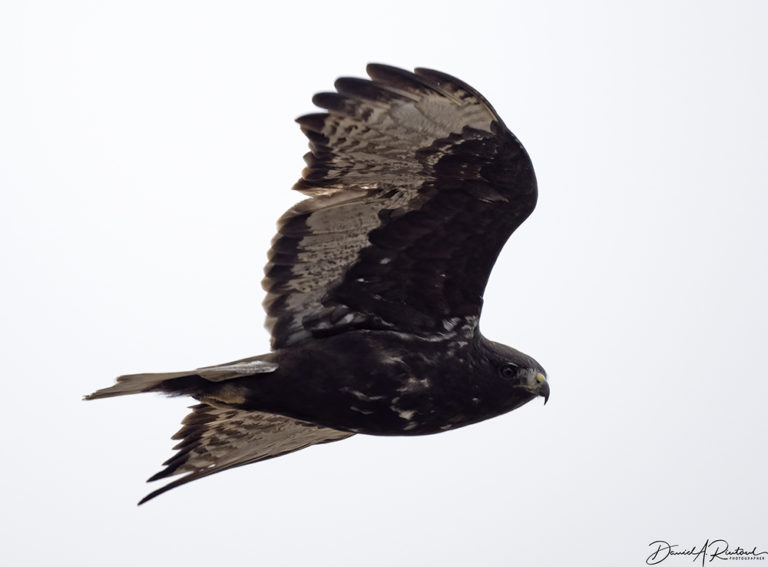
Adult dark-morph Harlan’s Hawks can be very dark indeed. But they will usually have some lighter spangling on the body or the head, in keeping with that high-contrast theme of stark blacks and bright whites.

Finally, in between those two extremes is the so-called intermediate-morph. Young birds of this version have just about the most spangled checkerboard plumage imaginable. And this one has a full crop just for show!
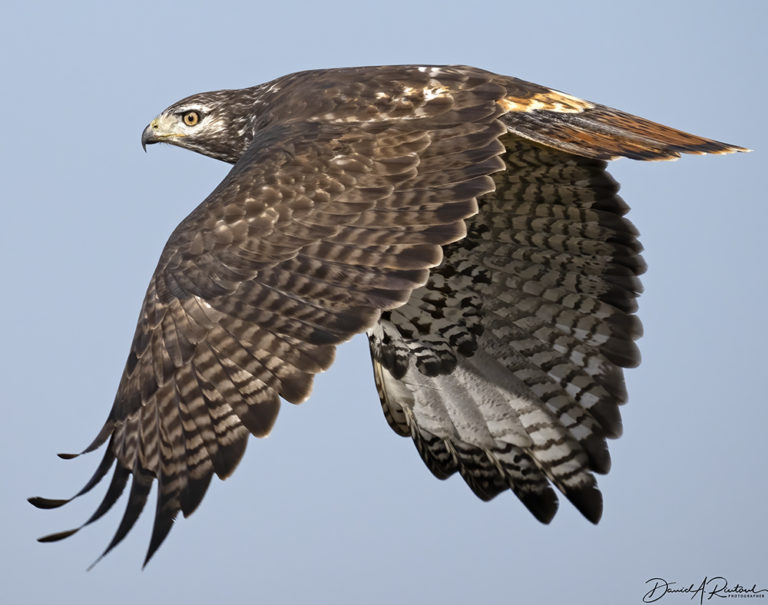
Adult intermediate-morph Harlan’s Hawks are especially unique, from the pattern of white on their heads to the colorful variations of their tails.
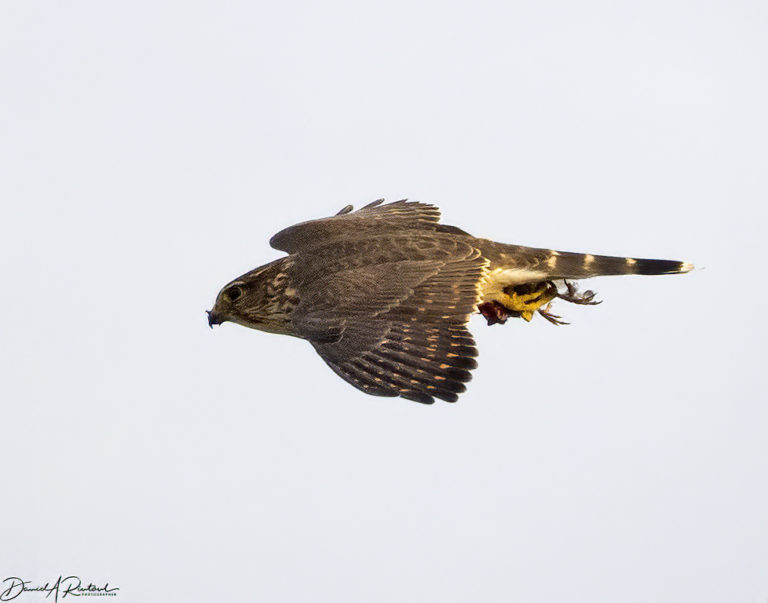
Merlins (Falco columbarius) are having a good showing in my part of Flyover Country this year, and this youngster was helping keep the starling population terrorized at a local dairy farm.

Even though it is not yet time to lay eggs, our local Bald Eagles (Haliaeetus leucocephalus) are hanging out at last year’s nests and discussing the redecorating that will be needed for the upcoming season. Interestingly, a couple of weeks after I took this picture, I passed by this spot again to find that this pair had built another huge nest only a few trees away. I guess they decided that the older one was not worth the repair and redecorating costs.
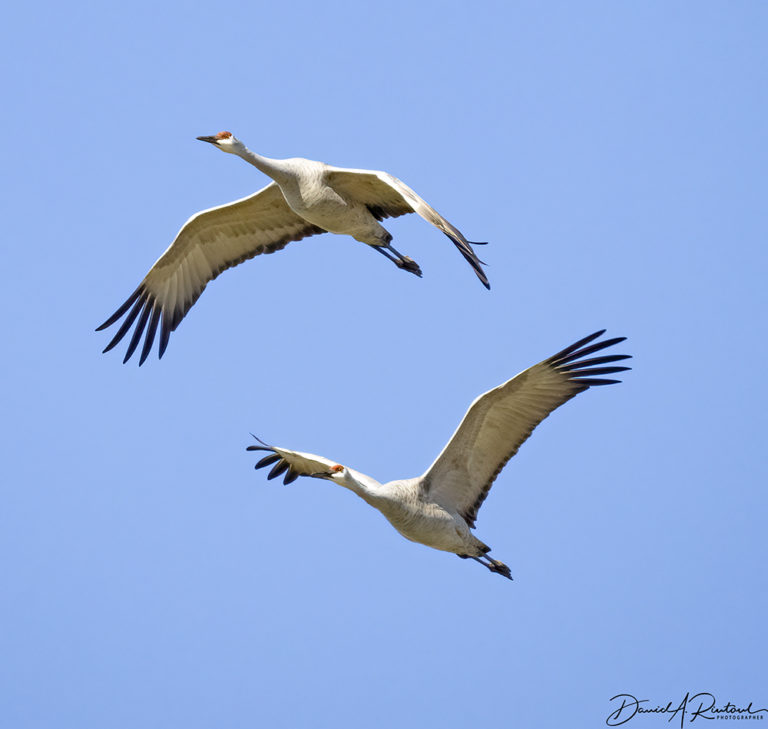
Our state Audubon group (Audubon of Kansas) has a Celebration of Cranes event at Quivira National Wildlife Refuge every fall, timed to coincide with the peak of Sandhill Crane (Antigone canadensis) migration, but also at a time when Whooping Cranes (Grus americana) should be passing through on their way to the Texas coast. I have helped with this event for a couple of years, and this year they had a spectacular day, both weather-wise and crane migration-wise. These were just two of many thousands of Sandhill Cranes seen that day.
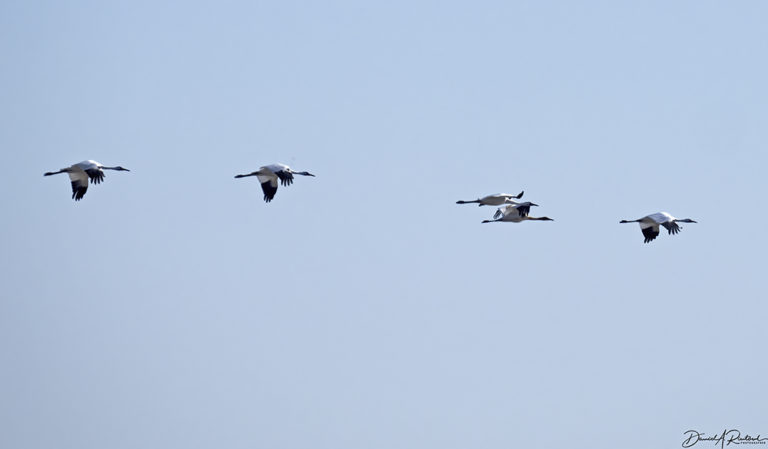
And these guys were the biggest thrill of the day for folks who came from all around the region to celebrate cranes. Whooping Cranes, one of the rarest birds on the planet and one of the best recovery success stories in North America. These birds loafed and fed on the refuge all morning, and took off for parts south just about mid-day. Truly a sight to behold!

JeanneT
Starting the day with your photos is always a treat!
OzarkHillbilly
Mondays with Albatrossity!
Rob
Harlan’s Hawks are so variable. Nice photos!
Betty
So many us are unaware of all this richness in the variations of just one species of hawk. Thanks for educating us on more of Nature’s gifts.
SiubhanDuinne
Vocabulary is insufficient to express how much I always love your photographs and sparkling commentary!
tandem
Thanks so much for the wonderful photos and instructive text! I should have written a long time ago to thank you for these beautiful and helpful posts (I am the “bird-identifier” in the family but I have loads of room for improvement!).
SteveinPHX
Thank you for the wonderful photographs and the education that you add!
Wag
Whenever I see a Harlan I get excited because each individual is so unique. Rah one is like a discovery.
arrieve
I will never not be amazed by your ability to capture birds in flight. I have enough trouble getting decent pictures of them perched in a tree. Gorgeous as always.
Chat Noir
Beautiful pix and descriptions, as always. Thanx!
MelissaM
Lovely pics. Can you explain “morph?” Will a Harlan’s hawk morph during season, or over lifetime, etc? To quote Limmy, I don’t get it.
Leto
Beautiful pics, as always.
Albatrossity
@MelissaM: These color variations are called morphs to distinguish them from phase, another word that is often used. Phase implies that it will change with time, e.g phases of the moon, etc. Morphs don’t change once the adult plumage is achieved in the second year of a Red-tailed Hawk’s life. A dark-morph bird will forever be dark.
MelissaM
@Albatrossity: Ah, thanks! That dark one is lovely, btw. And your bird butts calendar should be delivered today!
Jim Appleton
Thank you A! Lovely start to the week.
mvr
These are great photos as always. And I always like the raptor pictures. They may even help me identify Red Tails of various sorts by the end of my remaining lifetime. But they also illustrate why I sometimes despair of being able to tell various similar raptors apart. With Redtails it seems like there isn’t really a coloration or pattern they have in common, so what is there to go on? And what distinguishes a Harlan’s Hawk from other Red Tails? I’m so confused! (Actually going through the morph patterns for Harlan’s helped at least with those distinctions – thanks!)
Albatrossity
@mvr: Red-tailed Hawks are indeed daunting, and I too will spend the rest of my life puzzling over them! But the one field mark that distinguishes 98% of them from other species of buteo is that dark mark on the leading edge of the wing, from the body out to the bend of the wrist (not elbow). That dark line, called the patagial mark, is found in all redtails and not in other species (at least for North American species).
Of course, that is very hard to see in the dark-morph birds; it is there if you get the light just right in most cases. So if it is a dark bird, you have to go to other field marks to distinguish it from other dark hawks on this continent. Size, wing length, bill size, feathering on the feet, barring (or not) in the outer primaries, etc. If you haven’t gotten the free Raptor ID app from the folks at Hawkwatch International, download and install that right away. It is a great resource!
As for Harlan’s Hawks, the thing that makes them different is the tail. Every one is unique, so I can’t tell you what it looks like for every one. But I can tell you that it does not resemble the brick-red, often lightly banded, tail of all other Red-tailed Hawks.
Elizabird
Does the Merlin have something tiny in its beak? Does it need to wipe its mouth?
J R in WV
David, thanks so much for sharing your art and science with us Jackals of Balloon Juice so often. So beautiful, the birbs and the photos you make of the birbs. Plus the (very) odd other wildlife you come across.
I’ve taken a few pictures of soaring hawks, and it is way, WAY harder than it looks on the page. And doing a set of birb butts, the artist/scientist has a sense of humor, also too !!! Wonderful work!
Whooping cranes!! Amazed again. So sweet that they appear to be coming back.
Happy Monday, all ~!!~
mvr
@Albatrossity:
Thanks! That’s really helpful. I’ll get the app and practice.
Albatrossity
@Elizabird: Yes. It has a tiny chunk o’starling.
Elizabird
@Albatrossity. I THOUGHT SO!! :D
stinger
Amazing photos, and really appreciate the informative text as well. I’ve just ordered the going-away calendar. Thanks for the reminder!
JustRuss
The shot of the intermediate-morph is breathtaking. Thanks for the link to the Raptor ID app, installed.
Avalune
These are superb – thanks for sharing